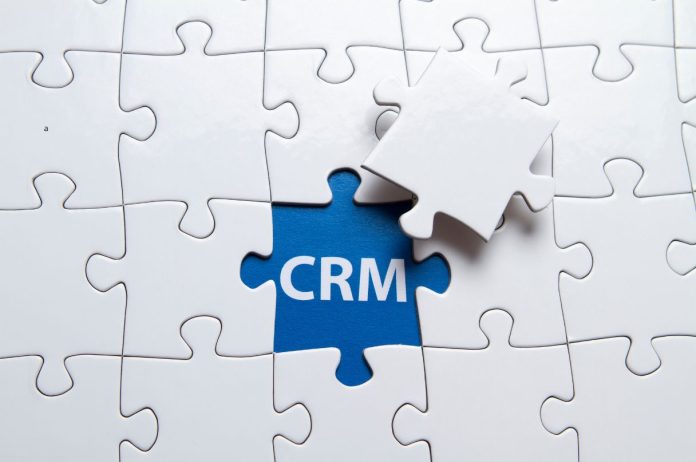Imagine yourself entering a supercar dealership and being approached by the seller, exposing your desires and being presented to machines capable of reaching 500 km/h. It is easy to be enchanted with so many features, power and resources. The problem is that once you bought the car, we quickly discovered that there are no suitable tracks to exploit all this potential. The test drive it was made in very special conditions and for many, you may feel like you were cheated at the time of sale or that that experience cannot be reproduced in real life.
Something very similar happens today in companies with CRM and marketing automation tools: just having the latest technology does not guarantee success, that is, it is no use having the supercar and driving it at the time of the rush. When it comes to CRM and, especially, Artificial Intelligence (AI) linked to CRM, the technological issue is far from the main problem. The great challenge that arises is to create a human and organizational ecosystem capable of extracting the maximum value from these technologies.
The AI revolution in customer relations is already underway, but most organizations have not yet managed to get out of the way “spam”. We send generic messages to entire databases because we do not know who really needs to receive that specific information. Our campaign returns are stagnant and low because we shoot everywhere, hoping to hit someone. We have all the tools to do differently, but we lack critical elements: the cultural change that allows people to properly feed the systems with valuable information and the absence of interconnection of contact channels with customers & these channels are multiplying with the advancement of technology. It is fundamental to make the data strategy something relevant to the company.
Imagine when investors start analyzing the data strategy of companies to price a stock? This will change the pointer of the balance.This will become as relevant when revenue e ebt. All companies still face technical problems with their legacy and, more difficult to solve, the cultural barrier.
Technically we are ready. We already have the supercars! Tools like Salesforce and ServiceNow already offer advanced data analysis, automation and customization features in real time. However, for these solutions to work, it is necessary that information is available, organized and institutionalized, not just stored in the memory of business teams or dispersed in email boxes and instant messages. Without this, the full potential of revolutionizing the way organizations sell, serve and connect with their consumers is lost.
This reality highlights the importance of a profound cultural change. Adopting AI in customer relationship processes goes beyond a technological transformation: it requires all those involved to understand the relevance of recording data, sharing knowledge and collaborating between areas. For example, it is useless to charge sales results without integrating goals that value the strategic use of information. The organizational culture needs to be aligned with the vision of putting the customer at the center.
Companies that have already reached maturity in this field understand that AI only generates value when it is inserted in an ecosystem with robust data governance. This work involves standardizing processes, eliminating information silos and establishing clear incentive policies. Only in this way is it possible to nurture systems with reliable data and allow AI to transform this information into actionable insights, actionable, driving targeted campaigns, improving conversion rates and predicting customer behaviors before problems escalate.
The technology exists, but the critical success factor is in people's ability to use it. The evolution of platforms with voice assistants, intelligent automations and predictive analytics only makes sense if employees are prepared and willing to use these tools as strategic support. AI can indicate the next lead more promising, predict an impending dissatisfaction or suggest a hyper-personalized campaign, but it is up to the human being to interpret and turn this information into action.
Here I allow myself to give an example. The conversational AI tools already allow a salesperson to record an audio on the way between meetings, describing what was discussed, and the system automatically creates opportunities, identifies contacts, suggests values and even proposes schedules for upcoming meetings. It is no longer about filling out extensive forms, but about talking naturally with an intelligent assistant who understands context and takes practical actions.
This journey also involves reviewing compensation structures, goals and indicators. Companies that segment departments without promoting internal collaboration end up wasting valuable opportunities (“customer-centric”), you need to align incentives between sales, marketing, service and operations, creating a single view of the customer. In this way, technology is no longer just an expensive investment and becomes a competitive advantage.
Organizations that have already begun to tread this path show that the true transformation is not in the tool itself, but in the adoption process. AI does not replace the human relationship: it enhances it. For this, it takes courage to change mindsets, discipline to record each interaction and acumen to extract value from this data. The result is a company capable of delivering personalized experiences, solving problems before the customer complains and, above all, building relationships of trust.
In the end, having the supercar is just the beginning.To achieve the full potential of modern customer relationship tools, you need to build the “autobahn (german road known for high quality and no speed limit) organizational: well-defined processes, strict governance, data-driven culture and professionals prepared to drive at high speed. Thus, AI ceases to be a distant promise and becomes a strategic ally in sustainable business growth.
*Marco Silva and Silva is executive director of GFT Technologies in Brazil


